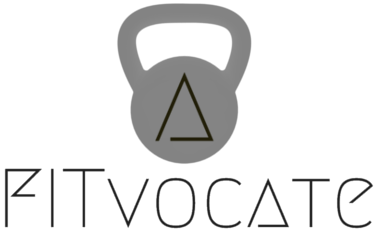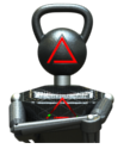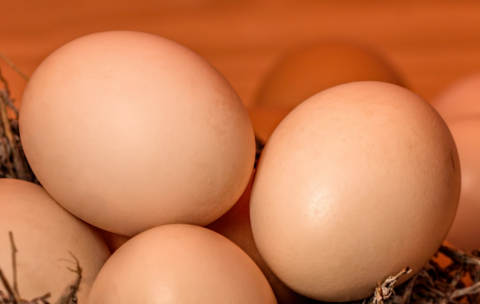
As an entrepreneur and owner of a start-up company, I understand the importance of being on a budget. As an avid gym goer and an advocate of increasing testosterone naturally, I know the importance of proper nutrition. So, with my years of experience of purchasing natural, wholesome, highly anabolic foods on a very tight budget, I present to you:
MY TOP 10 BUDGET ANABOLIC FOODS
In this list I have attached images of the foods that we purchase. If the image is a generic image of the food item, it simply means I just buy the store brand and that there is no need to be specific in the food item. These are the 10 foods that I eat everyday, and I assure you that if you made these items a staple of your diet, you will not be upset. The vast amount of Micro/Macronutrients as well as the vitamin and mineral contents of these items – your muscles and hormones will be optimal.

1. Eggs – The Whole Egg
When it comes to picking a food to fit your active lifestyle, there’s simply nothing that compares to a whole egg. Sure, the protein content is quality, but the saturated fat and cholesterol is what makes this food superb. Just a real quick overview on cholesterol-
There are 2 types of cholesterol:
- High-Density Lipoprotein (HDL) “Happy Cholesterol”
- Low-Density Lipoprotein (LDL) “Lousy Cholesterol”
Eggs are loaded with HDL which, from this study [1], you can read how “Higher Testosterone Levels are associated with Increased High-Density Lipoprotein”. Gentlemen, you couldn’t ask for a better anabolic food (especially if you’re on a budget), which is why it’s #1 on my list. I personally eat 12-16 whole eggs a day; I’ve been doing this for over a year now and this is the: strongest, heaviest (in a good way) and most athletic I’ve ever been in my entire life. Eat ‘em, fellas.
Fun Fact: If you’re on an all egg, no meat diet, you can be considered a vegetarian.
Conclusion: By eating purely egg-whites, (and throwing away the yolk) you’re depriving yourself of vital “masculinity enhancing” compounds – you’re also eating a substance that’s going to spike your insulin greatly...but that’s an article for another time. So, just eat the whole dang egg.
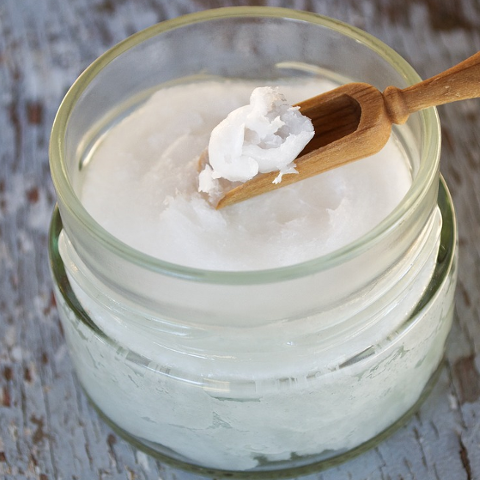
2. Coconut Oil – Extra Virgin, Unrefined
Yes, coconut oil has been labeled as one of those “trendy foods” do to its popularity on various social media outlets – but the hype is real! Trying to sell snake oil as a “cure all” is a scummy thing one can do, but coconut oil sells itself. In terms of macro nutrients: it’s purely a fat source, but men, fat is your friend. Here’s a real quick overview on fat
There are 4 types of fat (2 good and 2 you should avoid):
- Good Fat – Saturated and Monounsaturated
- Fat to Avoid – Trans and Polyunsaturated
Coconut oil per serving (14grams) contains: 13grams Saturated Fat and 1 gram of Monounsaturated Fat. Now, the only downside is that you can’t buy just any old coconut oil. The coconut oil you need to avoid is REFINED COCONUT OIL. Refined coconut oil involves a process of bleaching & deodorizing the coconut meat, adding chemicals to prolong shelf-life and adding the dreaded trans fat (for whatever reason). Avoid Refined Coconut Oil and purchase Extra Virgin, Unrefined Coconut Oil. The price difference is a little more, but the health benefits outweigh the costs. Eating at least 1tablespoon per day will have “mucho” benefits for you fellas.
- Increased and healthy thyroid function
- Weight-loss
- Great Moisturizer for your skin and conditioner for your hair
- Read this PDF [2] for more info.
Conclusion: As protein is the gateway to muscle repair, fat is the gateway to hormonal health. By eating high quality fats, on a daily basis, you will notice a change in yourself...I guarantee it.
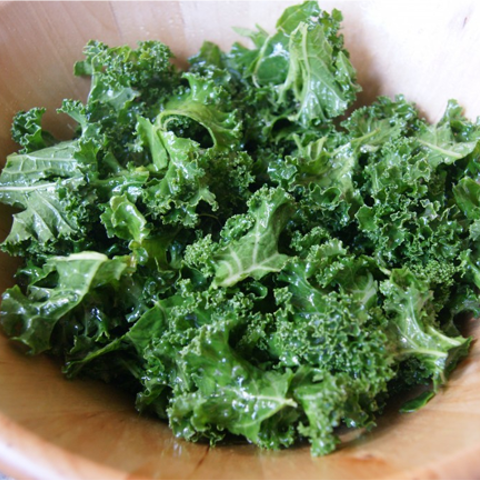
3. Kale – Raw
Let’s face it, fellas – you’ve probably assumed that “man foods” only consist of meat and potatoes...well, if you only eat those food sources and no greens, you’re well on your way to lowering your testosterone. Sure, meat and potatoes are great protein, fat and carbohydrate sources, but don’t forget the ever crucial “micro nutrients”. If you’re only concentrating on meeting your macro-nutrient daily quotas (proteins, carbohydrates and fats) and ignoring your micro-nutrients (vitamins and minerals) - you’re setting your endocrine system up for failure.
Here’s what 100 grams of this wonderful green stuff will give you that’s beneficial to your “T”:
- 308% Vitamin A
- 200% Vitamin C
- 1021% Vitamin K
- 39% Manganese
- 13% Potassium
- 3% Zinc
*Don’t worry, I’ll make an article soon about why these minerals are important. Just know for now that a diet rich in these vitamins and minerals is beneficial for your testosterone levels.
**Values collected from here [3]
If you simply cannot stand the taste and texture of kale, eat raw spinach! Spinach doesn’t have nearly the insane percentages as kale, but it is a complete protein source – this is important for vegans due to the fact that raw spinach contains all the amino acids required to be considered a complete protein.
Conclusion: Man Up &Eat your Greens! I buy a big bag of fresh Kale from BJ’s (a wholesale club) for about $1.99/bag. Some may say it’s a little pricey, but it’s my main source of greens and possibly the most micro-nutrient dense food I eat.
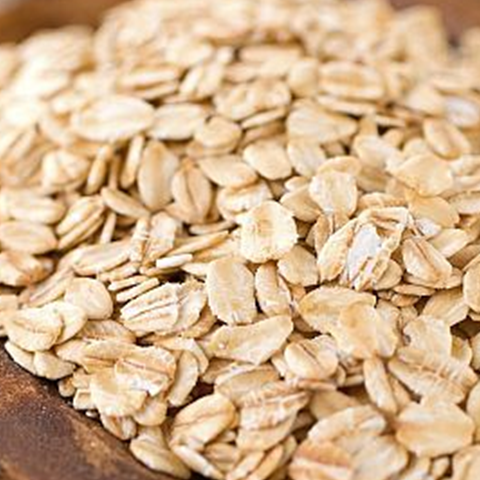
4. Oats – Old Fashioned, Rolled Oats
Carbohydrates are essential for a complete diet and possibly the most favored part of every diet – most people consider themselves “carboholics”. The only issue with carbohydrates is that they can sometimes have too much of an effect on your blood sugar (think sugary carbs like your favorite cereals, toaster pastries, bleached flours and such) but with a glycemic load of 39 (a number well less than 100 is considered low on the glycemic load scale) for 100grams (a decent serving of oats) you’re looking at a carbohydrate source that won’t spike your insulin levels at all, relatively speaking. Oats are a great source of fiber and protein (along with the carbohydrates) giving you 10grams and 13grams respectively per 100 grams serving. You can eat plain oats as a side dish to any meal, like you would rice or quinoa. Make sure you don’t get the “quick oats” variant, for they are processed to cook quicker, which is not necessary – old fashioned oats and rolled oats (the types that I recommend) will be fully cooked in 5mins via the microwave.
Conclusion: Oats have been a staple in my diet. Most people tend to prefer their oats sweetened with protein powders, sugar alchohols, or other variants...I prefer to make mine savory. I’ve found that you can substitute oats for rice 1:1 – I’ve even made sushi with oats once and it was FANTASTIC. On a higher fat diet, with a lower carb consumption it’s important for you to eat foods that are higher in fiber: Greens, Berries and Oats are all great choices. You can get a large quantity of oats for under $10.00 that should last you quite a long time. Some tips: get store brand oats and stock up on them if they’re ever buy one get one free.

5. Greek Yogurt - Plain
There’s a reason why Greek yogurt had such an impact on the dairy market this past decade, it contains two highly beneficial (and highly marketable) components: Protein & Probiotics.
Greek yogurt is most beneficial if you eat it plain – if you get the kind that has a higher sugar than protein content, you may arguably be doing more harm than good...but that’s a topic for another time.
First, I’ll talk about the protein content. Greek yogurt contains (per cup) anywhere from 18-25grams of protein – Greek yogurt being about 75% protein and 25%carb (if you get the plain non fat, the “full fat” variety is perfectly fine to consume as well, just watch the added sugars) you’re looking at approximately 130 calories per cup. In those 130 calories you’re getting a high dose of quality protein, which is important for building, repairing and maintaining that precious muscle. Being mostly casein,(milk protein contains casein and whey proteins) Greek yogurt is a slower absorbing protein, which is why it’s recommended as a quality breakfast source (or even an ice cream alternative for dessert).
Along with the protein content, the probiotic content is just as important! They say that a healthy individual should have close to 10lbs of bacteria within their person. You may have heard of “good bacteria” and “bad bacteria” - The Greek yogurt you buy, should say on the label somewhere “Contains Active Cultures” if it does, you’re golden. The Greek yogurt you purchase should also say more than one type of active culture: Lactobacillus Acidophilus, Lactobacillus Casei and maybe even a few more. Once you obtain a high concentration of the probiotics in your gut, (by consistently eating Greek yogurt on a daily basis) they will help aid in digesting the other foods you intake on a daily basis.
How does Greek Yogurt aide in naturally increasing testosterone?
-In this study [4] you can read how “Probiotic microbes sustain youthful serum testosterone levels and testicular size in aging mice.”
You may be thinking “Sure, Greek Yogurt is great, but how do I eat it plain? I can’t stand the taste” Luckily, you can add pretty much anything to Greek Yogurt and you’ll be happy. Here are a couple of items that you can add that will keep it relatively low calorie and anabolic:
- Honey (Raw or Unfiltered)
- Coconut Oil
- Sriracha
- Blueberries
- Banana
- Salsa
- Yellow Mustard
Conclusion: Greek Yogurt has been one of the greatest sources of protein for me, for the past 5 years – Greek yogurt provides a quality protein and probiotic source. If you can find a store brand Greek yogurt – Buy it. I can get Greek Yogurt on sale at 10/$8.00 (that’s a steal, think about it; for $8.00 I’m getting around 160grams of protein.) Eating it plain is the optimal way to intake it – make sure to keep the added sugar to a minimum. The cool thing with Greek yogurt is that you can go either the sweet or savory path. Here’s generally how I prepare my Greek yogurt: 1 Cup Greek yogurt, couple tablespoons of coconut oil, some salsa, a lil yellow mustard and cayenne pepper. It’s Πολύ καλά! (Very Good! - in Greek)
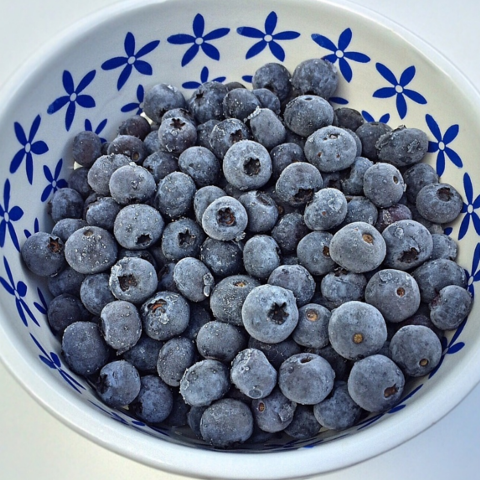
6. Wild Maine Frozen Blueberries – Unsweetened
The micronutrients (vitamins and minerals) you consume are just as (if not more) beneficial to naturally raising your testosterone levels than just a proper ratio of the macronutrients (Proteins, Carbohydrates and Fats).
If you’re looking for a micronutrient bomb, simply look no further than frozen blueberries - not only do they have a beautiful nutrient profile, they’re relatively cheap and can be added to many dishes to boost the nutritional benefits! I specify frozen blueberries simply because they are cheaper than fresh blueberries, they are frozen at their peak of ripeness (which means optimal nutritional retention) and you can get them all year long! A 3lb bag costs me about $10.00 – much cheaper than buying one of those pricey multivitamins, don’t you think?
Conclusion: When it comes to fruit, and micronutrient/antioxidant benefits – the darker, the more concentrated. Eat these lil beauties before bed (maybe with some greek yogurt) and the free-radicals in your body will hate you, while your muscles will love you. From Bj’s wholesale club I can get a 5lb bag for about $10.

7. Bananas – Yellow and Spotty
If you are able to read this, then I guarantee you know what a banana is. You probably read banana and automatically thought about potassium – yes, it’s a great source of potassium (23% RDA in 200grams) but don’t rule out the other nutrients contained therein. In a large banana (~136grams) you get the following:
- 31g Carbs( 4g Fiber/17g Sugar)
- 487mg of Potassium (14%RDA)
- 36.7mg of Magnesium (9%RDA)
- .4mg Manganese(18%RDA)
- 11.8mg Vitamin C (20%RDA)
- .5mg Vitamin B6 (25%RDA)
Conclusion: Bananas are often eaten around a workout – this is because of the high quality sugars and micro-nutrients qualities. I generally eat one per day, and it’s with my lunch. When it comes to when a banana is ripe to eat – it should be yellow and spotty (the more spots the better – read this article and you’ll see how those spots are actually a substance called Tumor Necrosis Factor (TNF) [5]
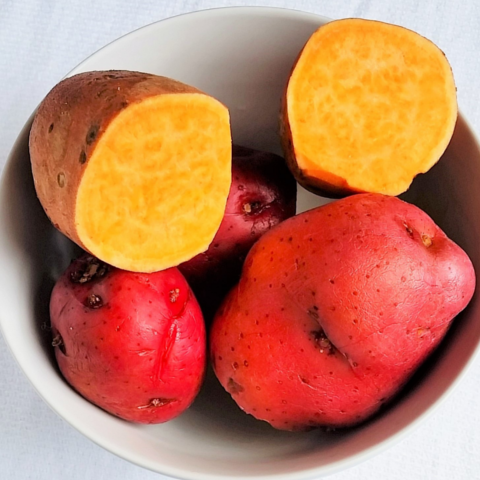
8. Potatoes & Tubers – All types
Sure, bananas are loaded with potassium and other vital nutrients, but there is an even cheaper nutritional source: The Potato.
Potatoes and Sweet Potatoes (Sweet potatoes aren’t actually a potato - but this means nothing to you - just know they’re nutritious. You can use that knowledge to “school” someone though. Here’s what you can say: “Sweet potatoes aren’t actually a potato, they’re a tuber. The sweet potato is a member of the morning glory family”[6])
There are two types of potatoes that we recommend: Sweet Potatoes and Red Potatoes. Red potatoes are much cheaper, and offer relatively similar nutrient values...but sweet potatoes have been given the green light by most gym goers as the most nutrient dense carbohydrate source available. Mainly due to the sweet potato’s orange flesh, they do tend to carry more vitamins. So let me give you the highlights of each and you can take it from there! As you’d expect potatoes have carbs…a lot for their serving size (41 & 34 grams per serving, sweets and reds respectively), and they also have some protein (4 grams per serving – sweet and reds), but where they really shine is in their vitamins and minerals. Sweet potatoes boast a whopping 769% of your daily requirements of Vitamin A, 14% of your daily requirements of Magnesium, and 50% of your daily requirements for Manganese. Red potatoes don’t have any vitamin A, but where these guys are most potent is in their potassium content with 943 mg per serving you’re reaching your daily requirements with 4 servings! That’s just about one serving per meal, and potassium is great for losing water weight!
A potato of the same weight (136grams) will provide nearly the same nutritional profile as a banana...but when potatoes cost about $3.00 for a 5lb bag (that’s 0.6 cents/pound, generally you’ll pay 0.69 cents/pound for bananas) I’m sure you can find it cheaper than that, but you really can’t beat that price to nutrient ratio! Let’s break down how much 1 potato will cost you for the bag I just mentioned. 136Grams = .3lbs = 6% of a pound = 6% of $3.00 = 0.18 cents per 136g of potato.
Conclusion: Potatoes are an important part of most people’s diets and luckily they’re nutritious. There’s some issues with certain potatoes (namely Russet) which tend to be a little high on the glycemic load...but if you’re hitting the gym hard and lifting heavy - you don’t have to worry about that! How to cook them? Bake/broil – NEVER BOIL! Nutritional values plummet and are released into the boiling water. Microwaving is fine too.
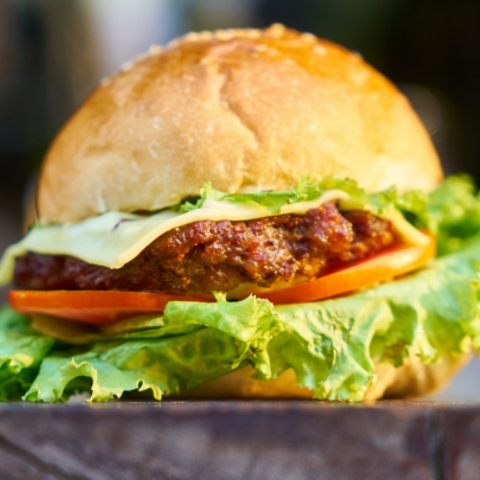
9. Turkey Burgers
WUHHHH? A processed food made the list? Certainly. Why not? These turkey burgers have a surprisingly low amount of ingredients; they are low in sodium and have a high protein content all at a cost that won’t break the bank!
I generally have 2 of these burgers for dinner and they are so satisfying and help boost my protein numbers for the day. Here’s what 1 turkey burger looks like:
- 190 Calories
- 0g Carbohydrates
- 11g Fat (2.5g saturated – great fat source which helps buffer the high protein content and reduces the insulin response that a purely lean protein source would have – an article for another day)
- 22g Protein
- Sodium 280mg (relatively low for a processed food)
Conclusion: When I eat 2 of these burgers, I get double all of those values, for less than 400 calories! I can get a decent sized box of them for about $13 (sometimes I get coupons for $3.00 off!) and 1 box can last me a couple of weeks (usually 2 weeks). Definitely a great buy. Thanks, Bubba.

10. Coffee
Most of us simply cannot function without our compulsive cup of morning coffee (or sometimes afternoon pick me up) luckily this stuff is dirt cheap and actually pretty good for you – but that all depends on what you put in it (because you simply cannot drink coffee as is - well, I can, but you won’t…yet!) and how much you drink, because too much coffee can be too taxing on your body due to the high caffeine content.
A nice medium roast coffee has an array of antioxidants (dark roasts tend to strip the coffee beans of their antioxidants). There are actually some valuable minerals present in a cup of coffee:
- Thiamin 2%RDA
- Riboflavin 11%RDA
- Folate 1%RDA
- Magnesium 2%RDA
- Potassium 3%
- Caffeine 100-200mg (depending on strength of the roast)
Conclusion: Coffee is dirt cheap and there are studies [7] that show the direct correlation of caffeine consumption and strength/power output, as well as, anaerobic performance increases – more strength, power and the ability to keep moving in the gym are all precursors to becoming more anabolic.
Conclusion
Possibly the largest benefit of consuming a whole foods based diet (particularly containing these foods) is that you don’t have to waste money on a redundant and expensive multivitamins and supplements. Some tips that I’ll give you are:
- Always shop the store brand if available.
- Shop at whole sale stores (BJ’s, COSTCO, Sam’s Club etc.)
- When items are on sale, load up on them. You’re going to buy them anyway.
- Don’t shop while you’re hungry. Money is always wasted on nonsense items. Stick to the plan, Jack.
So, hopefully this list of foods that I’ve provided will get you through whatever tough times you’re going through; we’ve all been there and everything’s going to be alright. Through this list (which could cost you $25-$50 per week) I wanted to prove to you that you don’t have to risk your testosterone levels by trying to save money and purchasing poor quality foods. FOOD IS LIFE!
We are advocates for your hormonal health!
-Chris
[1]https://www.ncbi.nlm.nih.gov/pmc/articles/PMC2666971/
[2]https://www.totalhealthsecrets.com/UPLOADS/productDocuments/983/CoconutOil.pdf
[3]http://nutritiondata.self.com/
[4]https://www.ncbi.nlm.nih.gov/pubmed/24392159
[5]http://www.ijohmr.com/upload/2(1).pdf
